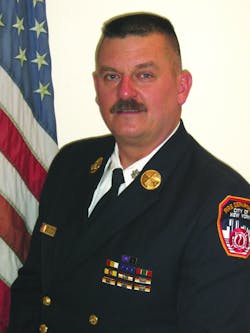The Fire Scene: Setting the Standard
When we say “setting the standard,” what exactly do we mean? It means establishing a level of excellence in whatever activity or job we are performing. Why is setting the standard important? Because when one group or team or, in the case of the fire service, one company or department strives to excel and is successful, everyone else notices.
If, for example, your department decides to establish, train and put into service a rapid intervention team, you cause your neighboring fire departments to sit up and take notice. Not only do they notice, but they start to watch and see how successful this new team is. They may even contact you and ask how it is going or if they can come by and see how you are training. When this starts to happen, you have just set a new standard.
Let’s look at ways in which a fire department or company can set the standard.
• Response times – When you start to pay attention to these times, they start to show you how well your department is doing. There are many issues within this category such as keeping these times low or rapid, keeping the responses safe and accident free, establishing response levels or codes that require different response performances for different levels of emergencies. When your department establishes these polices and performance levels, your neighbors will be watching. No fire chief wants his or her units to be involved in accidents. Every chief wants personnel to respond quickly and professionally. Once you show them how it’s done, the standard will have been set.
• Firefighting procedures – Many departments simply dispatch a prescribed number of companies and the first-to-arrive company officer or chief decides who will be assigned to what tactic. The firefighters are often left to select a tool or tools to carry to that assignment and quite often there is no other tactical information provided. In this type of situation, what are the chances of success? Would it be safer and more effective and certainly more professional to research, develop and institute a set of firefighting procedures that companies can follow on each alarm? You bet it would!
Now, not every department has the resources to establish assignments for three engines and two trucks at structural fires, but can’t they establish a policy that assigns certain commonly encountered tasks to the firefighters who most commonly respond to those calls. Further, can’t they dictate what tool combinations should be carried by the arriving firefighters so that a good number of different tools will be taken off the rig and carried into the building? When a department starts to plan ahead, assign tools and tasks to its people, it has set the standard.
• Apparatus and tools – Walk into any firehouse in America and pull open an apparatus compartment door. What do you see? Clean, well-maintained tools neatly mounted or stored side by side where they can be quickly seen and removed for an assignment or a pile of dirty, rusty tools thrown in from the last job? Now look at the apparatus. Was it last washed this past St. Patrick’s Day and has a coating of mud and salt from a previous snowstorm? Are warning lights broken or spinning without bulbs? Is this how the tools, equipment and apparatus that your life and the lives of the citizens we are sworn to protect depend upon?
Get with the program! I don’t care if you are a career department that runs 5,000 runs a year or a small volunteer company that runs 200. The condition, cleanliness, reliability and general condition of your tools and equipment must be nothing less than excellent. I have been in hundreds of firehouses where you could eat off the bottom of the apparatus compartments. There are companies that inspect and maintain their hand and power tools every tour or shift. Company ID markings are refreshed, steel tools are wiped, grinded or oiled if necessary and every compartment door is looked into. When you treat your tools well, they will treat you well in return.
